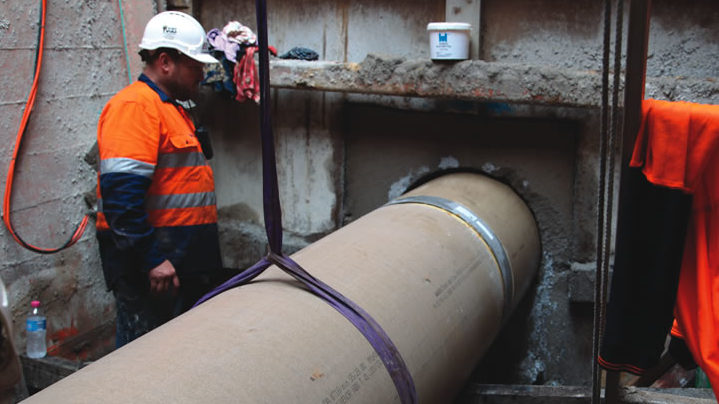Microtunnelling contractor Edge Underground recently completed a job in difficult terrain in Officer, Victoria
The location of Officer, Victoria is renowned as being treacherous for boring contractors, with many complicated ventures undertaken over the past few years. The combination of ground conditions makes this area particularly difficult; for the most part the ground is a dense, compact clay formation that can be of high plasticity. However, as you go deeper the ground changes and becomes silty and sandy with some isolated rock outcrops. In addition to this, the water table is high.
Contractor Delplant knew this area well and to tackle the requirement for a 700 mm bore on flat grades at 8 m deep with plenty of water and sand, Operations Manager Pat Delaney wanted to be sure he had confidence in his microtunnelling contractor. To add to the complexity, there was also time pressure on the installation as the decision to bore was a late call and there would potentially be a loss of production for the Delplant crews.
Mr Delaney selected Edge Underground; he had worked with Edge Underground Managing Director Stuart Harrison on difficult projects in the past, and the Delaney and Harrison families have worked in this area since the 1960s.
“A traditional microtunnel would have been a two-week installation; with Edge we could continue works after the pilot line was across at grade – this would only take two days,” said Mr Delaney.
Edge utilised its state of the art Vermeer AXIS system, a vacuum extracted, laser guided, precision horizontal boring machine. The system pilots a 300 mm casing on line on-grade and then upsizes and jacks pipe on the backream.
“One of the real advantages of the system is the pilot shot gives you a perfect geotechnical sample of the ground before you are committed and you are jacking pipe, ” Mr Harrison said.
Traditional methods jack pipe from the outset, therefore any variations in ground conditions, if not allowed for, can cause deviation and/or termination of a microtunnel line. By doing a 300 mm pilot line, the ground conditions are verified and changes are made prior to jacking pipe. Another advantage of the pilot line is that line and grade can be validated at this point and in so allow for the further production of the line with every confidence.
On the Officer pilot shot the ground was predominately wet, silty clay, however throughout the middle 30 m the ground became sandy and at points was purely wet sand. Armed with this knowledge, Edge tailored its backreamer to better handle the potential for ground flow and maintain a positive face pressure throughout the 718 mm installation.
The job took five days in total.
“Microtunnelling is a tough industry, however with the right people, knowledge, equipment and pipe, you will achieve the result you are looking for,” said Mr Harrison.
This article originally appeared in Trenchless Australasia. Read the original here

